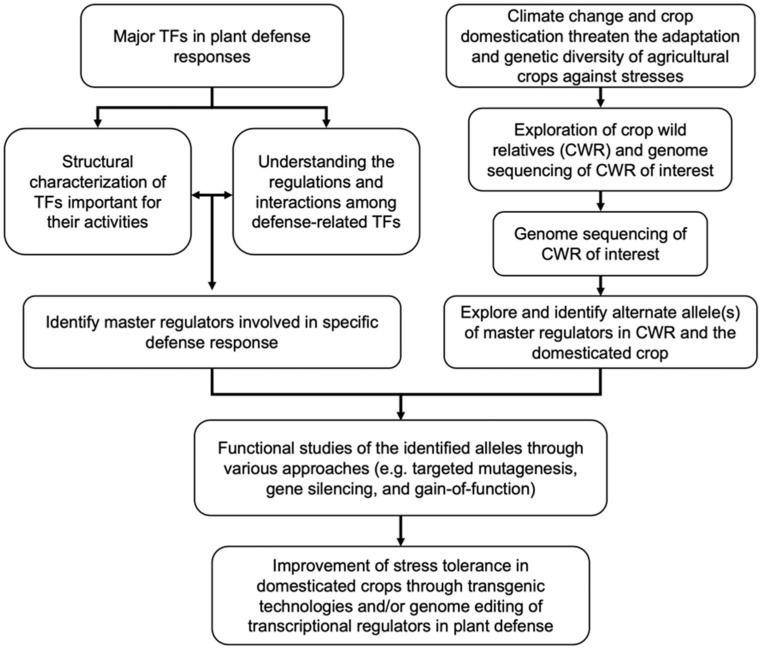Figure 3.
Flow diagram illustrating a strategy for genetic improvement of domesticated crops through genetic engineering of transcriptional regulators in plant defense. Understanding the structural characteristics of TFs that are important in determining their expression at transcriptional (auto-/cross-regulations), post-transcriptional (miRNA, alternative splicing) and post-translational (protein-protein interactions, localization, modification, and stability) will allow the identification of candidate master regulators for genetic improvement (left). Climate change and domestication of crops will have negative impacts on food security due to limited adaptation and genetic diversity of agricultural crops against stresses. In parallel, with the advance of genome technologies and identification of crop wild relatives (CWR), genome sequencing of CWR will permit the exploration of alternative alleles of potential master regulators in the wild relatives (right). Integrating such information will facilitate the selection of transcriptional regulators for functional studies using various approaches and subsequent improvement of stress tolerance in domesticated crops through transgenic technologies and/or marker assisted breeding.

